Visiting the Computer History Museum - IBM, Photoshop, Cray, and a robot
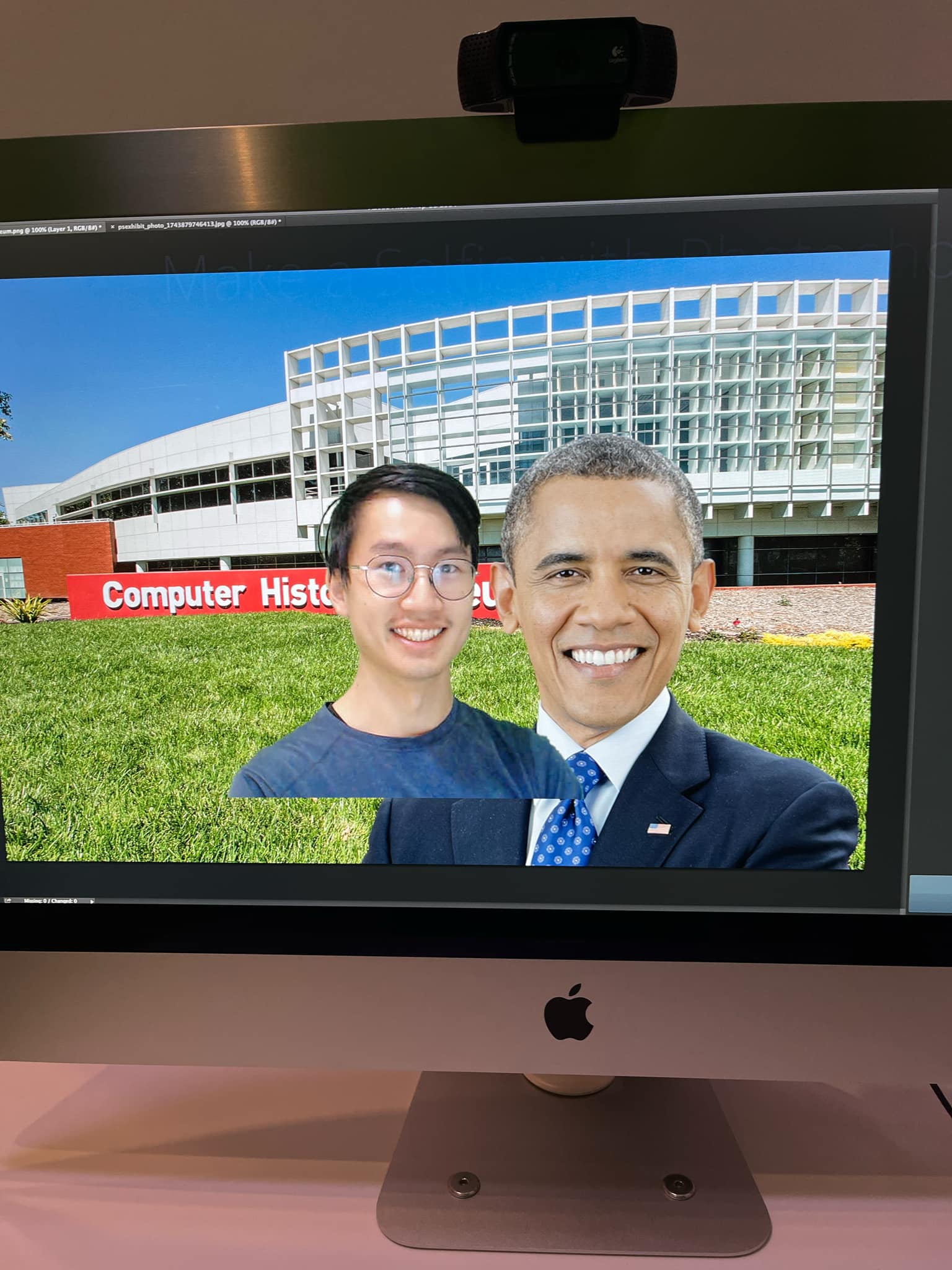 Last weekend I visited the computer history museum. I’ve read the Cuckoo’s Egg and watched videos about the Apollo guidance computers, so I’ve seen a bit of that retro stuff and I think it’s pretty awesome. I wonder if I would have enjoyed working with electronics more in the 80s vs now.
Last weekend I visited the computer history museum. I’ve read the Cuckoo’s Egg and watched videos about the Apollo guidance computers, so I’ve seen a bit of that retro stuff and I think it’s pretty awesome. I wonder if I would have enjoyed working with electronics more in the 80s vs now.
The museum’s in the heart of silicon valley. There is so much stuff in here! They had Apple II’s, tons of IBM computers, minicomputers, video game consoles, phones, man the list really went on and on. They were, however, missing a Babbage Difference Machine and an Enigma Machine, which I always thought were super influential to the field of computing. Also, maybe I missed it but I didn’t see any mention of Ada Lovelace either. But there was still a bunch of fun stuff, I’ll list my favorites:
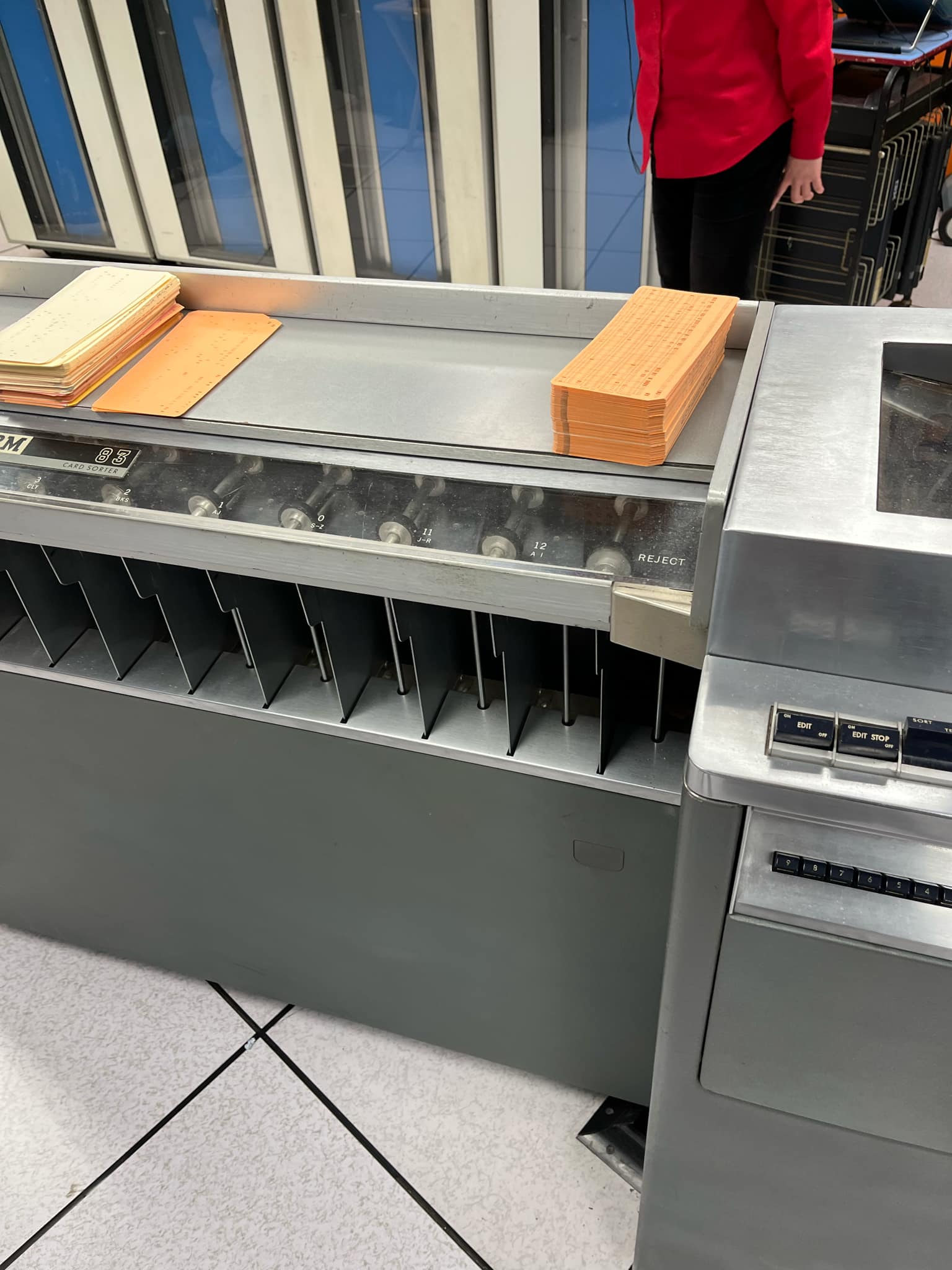 An IBM punch-card sorting machine. It could sort 2000 cards per minute. So if you had 2 million customers, it’d take you 17 hours to sort them in order, assuming the machine didn’t get jammed. Tough work!
An IBM punch-card sorting machine. It could sort 2000 cards per minute. So if you had 2 million customers, it’d take you 17 hours to sort them in order, assuming the machine didn’t get jammed. Tough work!
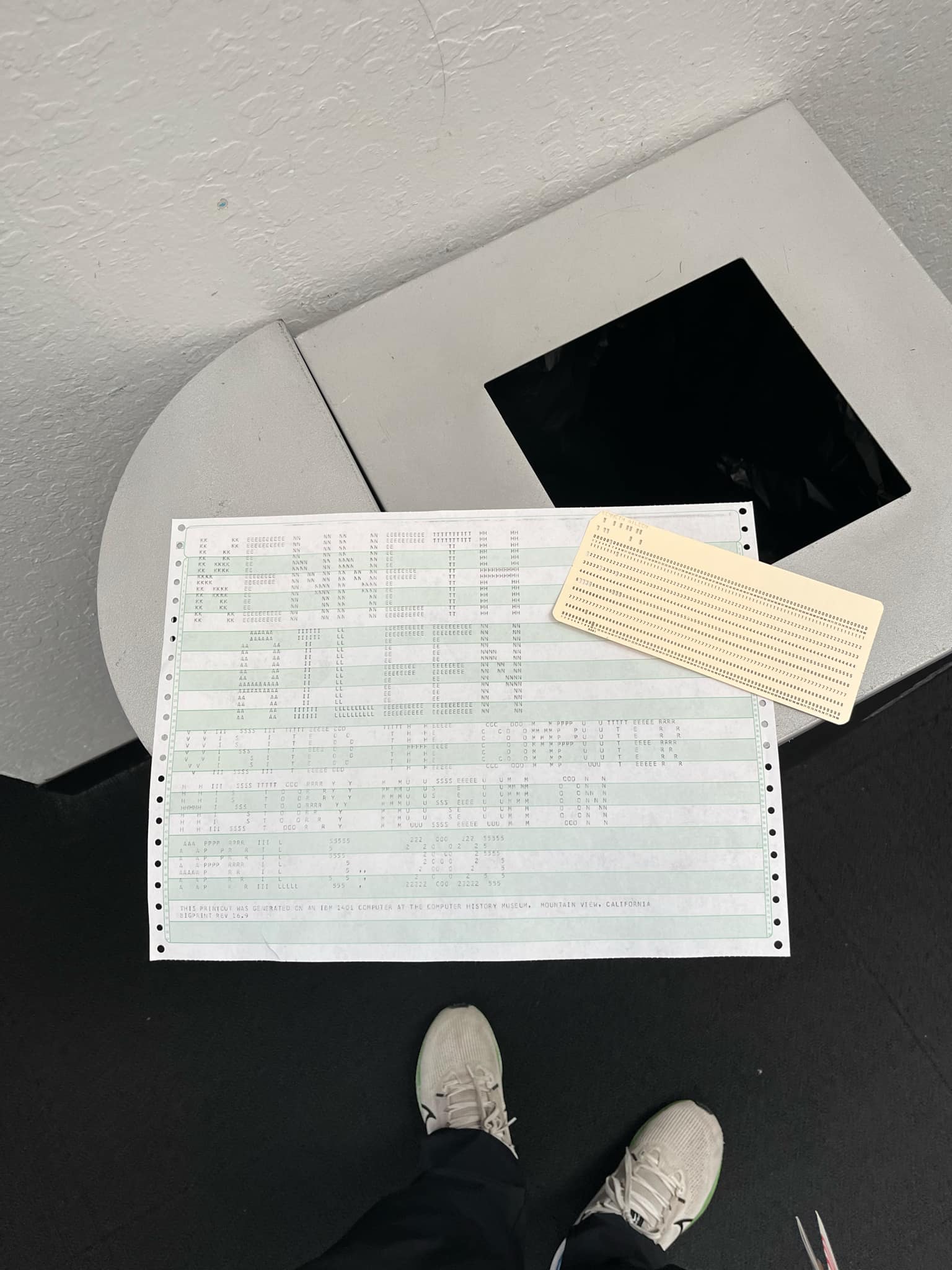 They had a demo of an operational IBM machine and I got to use a punch card to print my name out. I added Aileen’s name because I miss her.
They had a demo of an operational IBM machine and I got to use a punch card to print my name out. I added Aileen’s name because I miss her.
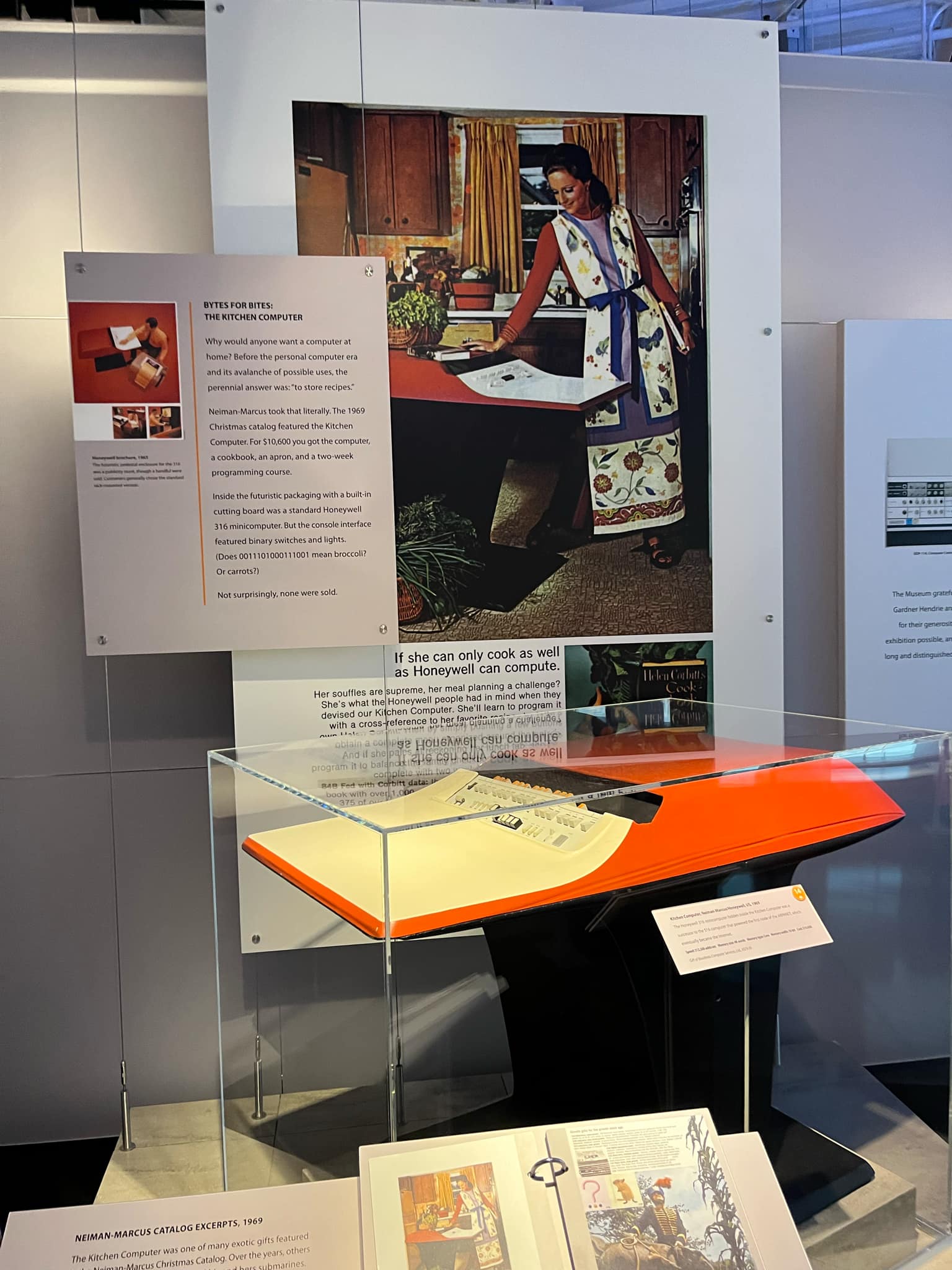 They had a kitchen computer, of which 0 were sold lol.
They had a kitchen computer, of which 0 were sold lol.
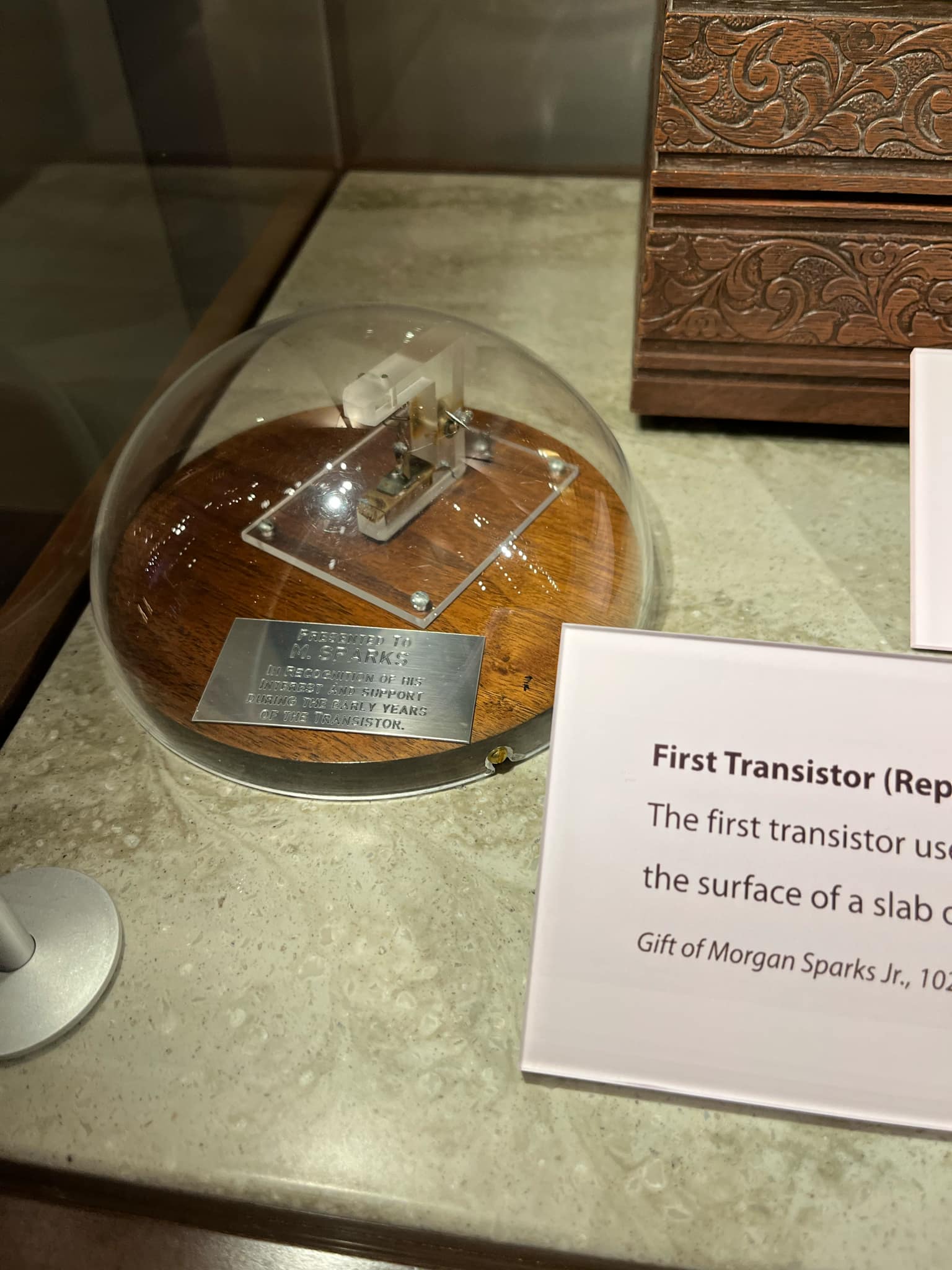 Look ma, the original transistor!
Look ma, the original transistor!
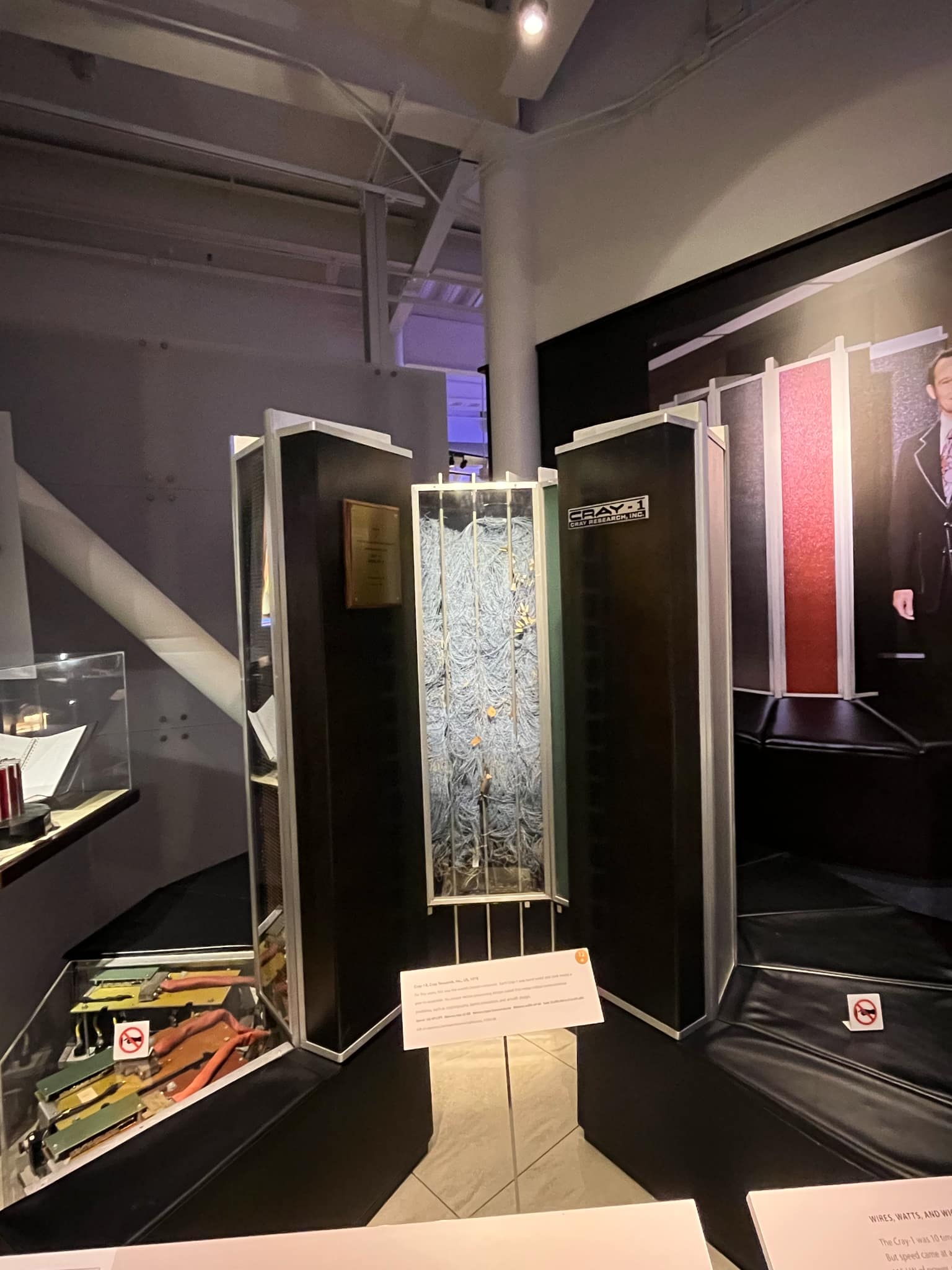 And my favorite computer, the Cray-1. The original advertisement for it said it was “only 70 square feet!” With a whopping 32 megabytes of RAM, it was the fastest computer built at the time. I love it because it’s got a really wacky shape to optimize wire length apparently, it represents a pretty huge breakthrough, and it even came with a built-in bench, though I guess modern desktop towers also come with a bench. There’s just something about Cray computers that just look awesome to me. They’re like spaceships.
And my favorite computer, the Cray-1. The original advertisement for it said it was “only 70 square feet!” With a whopping 32 megabytes of RAM, it was the fastest computer built at the time. I love it because it’s got a really wacky shape to optimize wire length apparently, it represents a pretty huge breakthrough, and it even came with a built-in bench, though I guess modern desktop towers also come with a bench. There’s just something about Cray computers that just look awesome to me. They’re like spaceships.
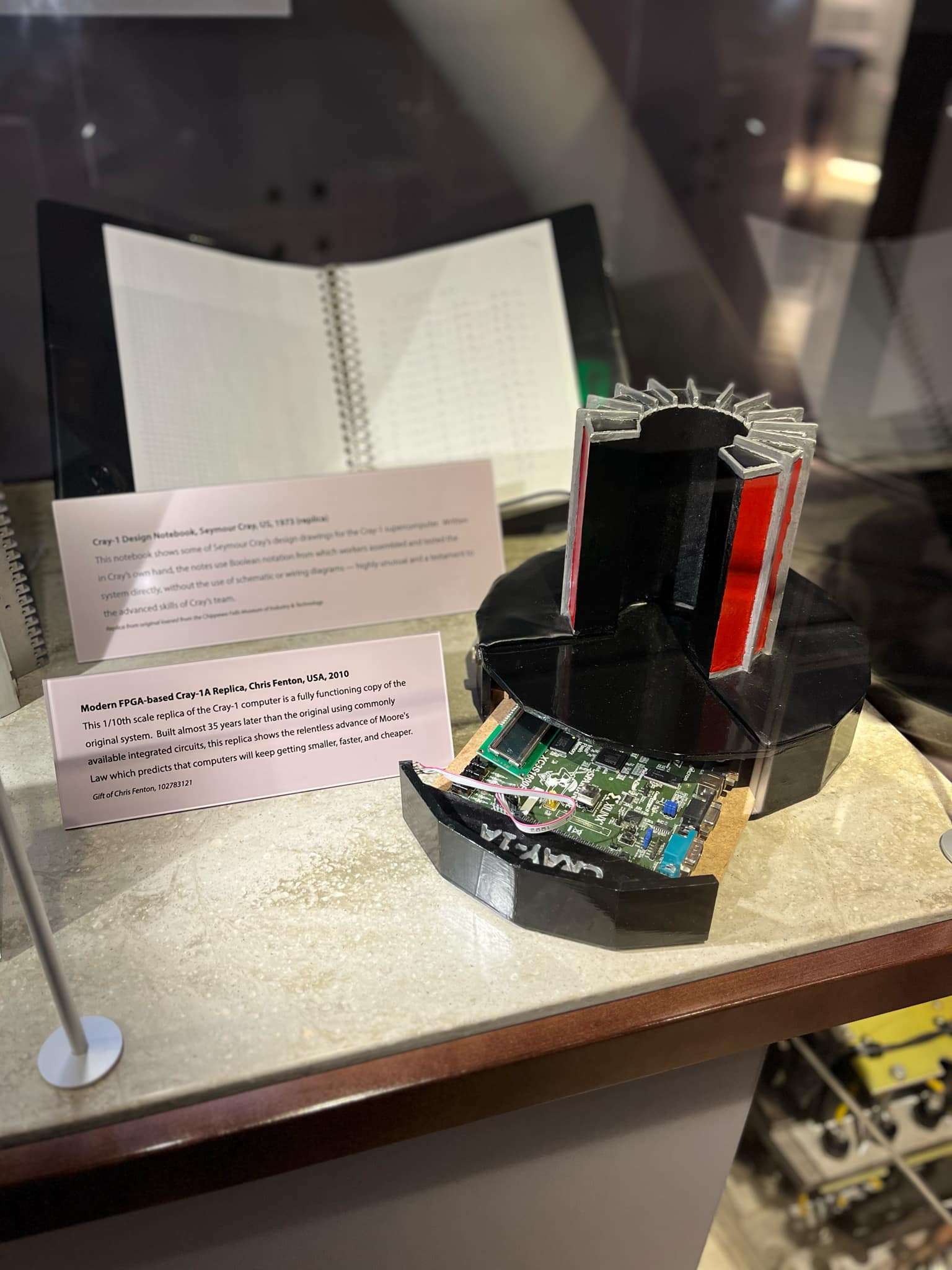 What’s funny is right next to it, there was a 1/10th model of it with an FPGA capable of running the same software at the same speed. Moore’s Law much? Insane. The guy who built it also made an awesome model of a different computer in watch form.
What’s funny is right next to it, there was a 1/10th model of it with an FPGA capable of running the same software at the same speed. Moore’s Law much? Insane. The guy who built it also made an awesome model of a different computer in watch form.
The detailing in every bit of this computer was really intense. I read that it took 1 year for them to build one. So many computers from this era were hand-made, hand-wired, and hand-soldered. We didn’t have auto layout tools or even compilers. Honestly, the insane complexity of these machines makes me wonder how they ever built anything that worked. Seriously, humans hand-wired the entire machine. Who decided which wire went over which? How could you possibly make it repeatable? I love zooming into the details on really complex issues, because that’s where the fundamental concepts come into play. But with this level of complexity, how can you possibly debug anything?
Nowadays, all of our microprocessors and circuit boards are built in factories by machines. These are extremely repeatable processes with a ton of quality-control steps. When I’m trying to figure out why my program keeps crashing and rebooting, I can be pretty sure it’s my code that’s causing it and not some part of the chip. There is a pretty high-level “clean slate” that we can rely on when working on these boards, which is a huge luxury we have today.
Clearly, the products they were building did not have a clean slate. There are just so many variables at play, I genuinely think I’d be completely paralysed if faced with an issue there.
The biggest thing I’m taking away from this museum, not that one needs to always take a lesson from a museum, is that, well, maybe I shouldn’t zoom into the details so much. These massive empires and corporations were built by people who saw the whole picture – people who did not worry about the individual wire crossing over the other, because if they did worry about that they’d never make any progress. These people took certain details for granted and accepted that important details and issues would show up when the time arose. I should be able to move forward while accepting some risk that parts of the system are not set up 100%.
Anyways. I ended my day at the museum watching a robot dance to some fonky beats.
If you got this far, thank you for reading my blog post! I’d love to hear your thoughts, so please reach out at my email shown at the bottom of the website. Thanks!